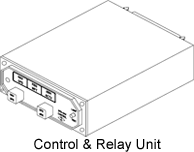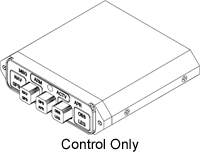 will be closed December 24th - January 2nd for the Holidays.
will be closed December 24th - January 2nd for the Holidays.
Regular business hours will resume on Monday, January 5th.
AOG Services are available.
| Part #: | 011-01064-00 |
|---|---|
| Model: | GNS-530W |
| Desc: | WAAS GPS/Nav/Comm |
| OEM: | Garmin |
| NSN: | |
|---|---|
| Sched-B: | 8526910010 |
| ECCN: | 7A994 |
 Select part number above to view pricing and availability.
Select part number above to view pricing and availability.
| Price | Condition | Availability | Stock Info | |
|---|---|---|---|---|
| Price | Cond. | Avail. | Stock Info | |
| $9,250.00 | SV OUTRIGHT | 1 IN STOCK |
Serial #: 23803325 [Details]
|
|
| $3,250.00 | SV EXCHANGE | 1 IN STOCK |
Serial #: 23803325 [Details]
|
| Price | Condition | Availability | Stock Info | |
|---|---|---|---|---|
| Price | Cond. | Avail. | Stock Info | |
| $8,950.00 | SV OUTRIGHT | 5 IN STOCK |
Serial #: 78412999 [Details]
Serial #: 78418050 [Details]
See More Stock
|
|
| $3,250.00 | SV EXCHANGE | 5 IN STOCK |
Serial #: 78412999 [Details]
Serial #: 78418050 [Details]
See More Stock
|
| Price | Condition | Availability | Stock Info | |
|---|---|---|---|---|
| Price | Cond. | Avail. | Stock Info | |
| $3,595.00 | SV EXCHANGE | 4 IN STOCK |
Serial #: 78412337 [Details]
Serial #: 78403311 [Details]
See More Stock
|
|
| $11,250.00 | SV OUTRIGHT | 4 IN STOCK |
Serial #: 78412337 [Details]
Serial #: 78403311 [Details]
See More Stock
|

GNS-530W
**Click Here to download the GNS-530 Quick Reference Guide **Click Here to download the GNS-530 Pilots Guide
Coverage: Americas, International, or Worldwide
Airports: Identifier, city/state, country, facility name, lat/lon, elevation, fuel service, control, approach information
VORs: Identifier, city/state, country, facility name, lat/lon, frequency, co-located DME/TACAN, magnetic variation, weather broadcast indication
NDBs: Identifier, city/state, country, facility name, lat/lon, frequency, weather broadcast indication
Intersections: Identifier, country, lat/lon, nearest VOR
Frequencies: Approach, arrival, control area, departure, Class B, Class C, TMA, TRSA (with sector, altitude, and text usage), ASOS, ATIS, AWOS, center clearance delivery, tower, ground, unicom, pre-taxi, localizer, and ILS
Runways: Designation, length, width, surface, lighting, pilot-controlled lighting frequency
FSS: Identifier, reference VOR, frequency, usage
ARTCC: Identifier, frequency, usage
MSA: Minimum safe altitude along and in proximity to active flight plan
Approaches: Non-precision and precision approaches throughout the database coverage
SIDs/STARs: Contains all pilot/nav SIDs/STARs
Airspaces: Class B & C with sectors, International CTA & TMA with sectors, all SUAs, including MOAs, prohibited and restricted areas with controlling agency and airport
Emergency Search: 9 nearest airports, VORs, NDBs, intersections, or user waypoints; 2 nearest FSS and ARTCC frequencies
Alarms: Arrival and CDI, timers, SUAs less than 10 min, 2NM and inside SUA
Waypoints: 1,000 User Defined
Flight Plans: 20 reversible routes of up to 31 waypoints each
GPS: TSO C129a, Class A1 (en route, terminal, and approach)
VOR: TSO C40c
LOC: TSO C36e
GS: TSO C34e
VHF COM: TSO C37d, Class 4 and 6 (transmit) and TSO C38d, Class C and E (receiver)
GPS Performance:
Receiver: twelve parallel channel receiver simultaneously tracks and uses up to 12 satellites
Acquisition Time: 12 seconds (warm), 45 seconds (cold)
Update Rate: Once per second, continuous
Accuracy:
Dynamics:
Nav Features: Pilot-defined Course Selection and Waypoint Hold, Closest Point of Approach, Departure and Arrival Frequencies, Approach Navigation using published approach procedures stored on NavData card, Terminal Navigation using SIDs/STARs from NavData card
Planning Features: True Airspeed, Density Altitude, Winds Aloft, RAIM Availability, Sunrise/Sunset Times, Trip and Fuel Planning, Vertical Navigation (VNAV)
Interfaces: ARINC 429, Aviation RS-232, CDI/HSI, RMI (digital: clock/data); Superflag Out, Altitude (serial: Icarus, Shadin-Rosetta, encoded Gillham/Greycode), Fuel Sensor, Fuel/Air Data
Map Datums: 124 and 1 user-defined
Frequency Range: 108.00 MHz to 117.95 MHz
VOR/LOC Composite: 0.50Vrms/0.35Vrms
CDI Output: plus or minus 150mV Full Scale
Centering Accuracy: plus or minus 2.0 degrees
Flag Sensitivity: -103.5 dBm
DME Channeling: 2x5 available, Slip Code, BCD, King Serial
Audio Sensitivity -103.5 dBm for 6 dB S/N with 1 kHz 30% mod.
Audio Output: 100 mW (minimum) into 500 ohm load; External amplifier required
Frequency Range: 329.15 MHz to 335.00 MHz
CDI Output: plus or minus 150mV Full Scale
Centering Accuracy: 0 ddm plus or minus .0091 ddm
Frequency Range: 108.10 MHz to 111.95 MHz
CDI Output: plus or minus 150mV Full Scale
Accuracy:
Flag Sensitivity: -103.5 dBm
Audio Sensitivity: -103.5 dBm for 6 dB S/N with 1 kHz 30% mod.
Audio Output: 100 mW (minimum) into 500 ohm load; External speaker amplifier required
Frequency Display: Upper-left corner of active matrix LCD, 2-lines with active frequency above standby
Channels: 760 (25 kHz spacing); configuration for 3040 channels (8.33 kHz spacing) also provided
Frequency Range: 118.000 MHz to 136.975 MHz
Transmit Power: 10 watts (minimum)
Modulation: 70% (minimum)
Receive Sensitivity: 2.0 microvolts (hard) for 6 dB S/N with 1 kHz 30% mod.
Squelch Sensitivity: 2.0 microvolts (hard) typical
Audio Output: 100 mW (minimum) into a 500 ohm load; External speaker amplifier required
GPS: TSO C129a A1
VOR: TSO C40c
LOC: TSO C36e
GS: TSO C34e
VHF COM: TSO C37d, Class 4 and 6 (transmit) and TSO C38d, Class C and E (receive)
Unit Size: Width = 6.25"; Height = 4.30"; Depth = 11.00" behind panel, with connectors
Unit Weight: 7.0 pounds installed
Display: Color LCD
Power: 14/28 VDC
Data Storage: Separate internal battery protects stored data for up to five years
Temperature: -20°C to +55°C (operating range); -20°C to +70°C (short-term operation)
Humidity: 95% non-condensing
Altitude Range: -1,500 ft to 50,000 ft
| Part Number: | Description: |
|---|---|
| 011-01064-00 | WAAS GPS/Nav/Comm, Black, 14/28V |
| 011-01064-10 | WAAS GPS/Nav/Comm, Gray, 14/28V |
| 011-01064-40 | Black, 14/28V, Upgrade from non-WAAS unit |
| 011-01064-45 | Black, 28V, Upgrade from non-WAAS unit |
| 011-01064-50 | Gray, 14/28V, Upgrade from non-WAAS unit |
| 011-01065-00 | WAAS GPS/Nav/Comm, Black, 14/28V w/ TAWS |
| 011-01065-10 | WAAS GPS/Nav/Comm, Gray, 14/28V w/ TAWS |
| 011-01065-40 | Black, 14/28V w/ TAWS, Upgrade from non-WAAS unit |
| 011-01065-45 | Black, 28V only, w/ TAWS, Upgrade from non-WAAS unit |
| 011-01065-50 | Gray, 14/28V w/ TAWS, Upgrade from non-WAAS unit |
| Serial # | 23803325 |
|---|---|
| Condition | SV |
| Mods | 1-7 |
| Tag Date | 12/11/25 |
| Shop | Southeast Aerospace Inc. |
| Warranty | 6 Months |
| Price | Condition | Status |
|---|---|---|
| $8,950.00 | SV OUTRIGHT | 5 IN STOCK |
| $3,250.00 | SV EXCHANGE | 5 IN STOCK |
| Price | Condition | Status |
|---|---|---|
| $3,595.00 | SV EXCHANGE | 4 IN STOCK |
| $11,250.00 | SV OUTRIGHT | 4 IN STOCK |
| Price | Condition | Status |
|---|---|---|
| $9,250.00 | SV OUTRIGHT | 1 IN STOCK |
| $3,250.00 | SV EXCHANGE | 1 IN STOCK |
Click on a question below to see the answer. If you have a question about this model that is not answered below, please contact questions@seaerospace.com
According to Garmin Support Memo dated July 21, 2010, effective September 30, 2010, the 28 Volt only versions of the GNS-430/530 series units will no longer be repaired due to parts availability issues.
The 28 Volt only versions of the GNS series units are the very first original productions units from the late 1990s.
In relation to NE (New) parts, many OEMs change their prices and availability without any notice to dealers or the industry. Therefore, through the REQUEST or RFQ indication, we ask that customers contact us for the most accurate price and availability.
In relation to SV & OH parts, the used parts aftermarket in the aviation industry is not an infinite supply. It is a dynamic, constantly changing market that is significantly affected by and susceptible to highs and lows in supply and demand. Therefore, although we attempt to, at times, we are unable to predict the exact moment when an item may be available. Once again, through the REQUEST or RFQ indication on our website, we ask that customers contact us for the most current and accurate price and availability.
Garmin has provided Service Advisory 2051 for general recommendations, materials, and supplies to clean and disinfect Garmin products. Otherwise, not following the recommendations could void the warranty.
First, we would recommend contacting a local Garmin dealer to discuss the following:
Traffic can be displayed in two different map views on the 400 and 500 series aviation devices. The thumbnail view is always in a track-up reference while the map view can be in either a track-up or north-up reference. To see traffic simultaneously on the map and on the thumbnail, the orientation of the map must be set to track-up. Otherwise, traffic will only be shown on the map and the thumbnail will say "See Map".
The WAAS systems have the same capabilities as the 400/500 systems plus a few more. With the WAAS signal being acquired, the GPS can give vertical guidance to a runway similar to an ILS glide slope indication. The WAAS units have added display capability when connected to our GDL-69/A XM Satellite weather/radio receiver. They also have additional ARINC 424 leg types to guide a compatible autopilot through procedure turns and published holds.
An altimeter does not measure altitude on the Garmin GPS device. The altimeter in the aircraft measures air pressure. The altimeter is calibrated to display a certain change in altitude based on a change in air pressure. For every inch of mercury pressure change, the altimeter displays a change of approx. 1000 ft. of altitude. The GPS does not use air pressure to determine altitude and is not subject to the pressure errors in determining altitude. Therefore, the GPS derived altitude is almost always more accurate than an altimeter. Since everyone uses a pressure-based system to determine altitude, it is integral to utilize a pressure sensitive altimeter to ensure required vertical separation.
The GTN 750 is a replacement for the GNS-530W. You can compare the two units here
See this PDF document for a detailed listing of currently available IFR GPS systems and a brief comparison.

 |
 |
 |
For handheld GPS receivers, database updates can be ordered and downloaded directly through Garmin's Internet site.
For panel mount GPS receivers, all database cards and computer downloads (if applicable) must be ordered through Jeppesen. Contact Jeppesen at www.jeppesen.com for more information.